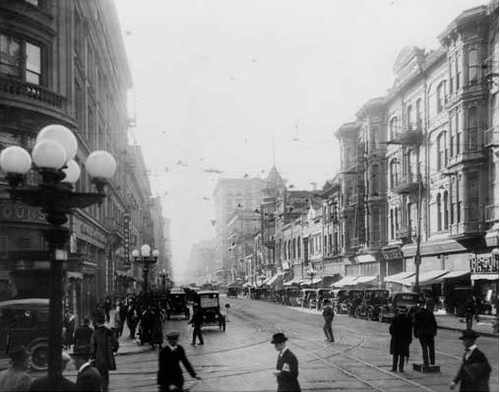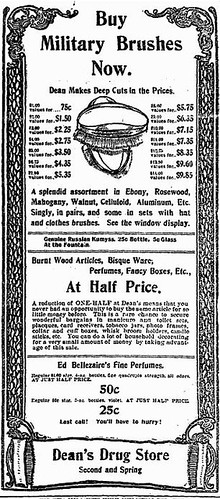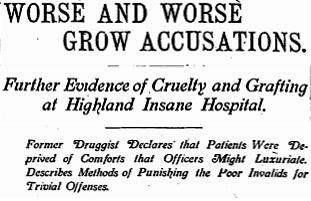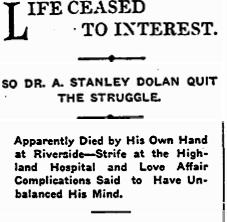
Second and Spring Streets, ca. 1920
Courtesy Los Angeles Public Library Photo Collection
F.E. Howard would have plied his trade as a druggist at Dean’s Drugstore on 2nd and Spring Street in relative anonymity if it weren’t for the outcry raised by nurses at his former workplace, the Southern California Hospital for the Insane at Highland.

Allegations of cruel and inhuman abuse of the inmates at Highland surfaced in the summer of 1903, after San Bernardino papers published a series of investigations into graft and financial irregularities at the institution. The nurses charged that female patients were routinely operated on without the benefit of anesthesia, and were punished by “protective sheeting” or immobilization in their beds under sheets of heavy canvas, sometimes for weeks at a time. The nurses also testified to the common punishment known as “giving the hypo”, hypodermic injections of apomorphia, a violent emetic that causes hours of agonizing cramps, followed by hours of vomiting and eventual collapse. The injections were repeated usually twice a day, for five days at a time, for such mild infractions as insubordination and “talking in excess.”

State Hospital at Highland
Image courtesy of USC Digital Archives
Before he signed on as an assistant at Dean’s Drugs, F.E. Howard worked for two years as the druggist at Highland, and kept written records from his tenure that supported the nurses’ testimony. He supplied the names of over forty victims of the body-wrenching, organ destroying emetic punishment, as well as the date the drug was administered. He also testified that the drug hyosine was used to punish recalcitrant patients, a medication which works on the kidneys and puts the victim to sleep. He alleged that at least one patient died as a result of a punitive hyosine injection.

In addition Mr. Howard provided records that supported allegations of graft and fraud in the institution. Highland’s Superintendent Dr. Campbell, and chief medical officer Dr. Dolan rewarded his whistle-blowing with swift law-suits, accusing Howard of stealing government records. But they were unable to deflect the public outcry, or the findings of the investigation ordered by the Board of Directors of the state institution. By the end of the Highland scandal, both men resigned under pressure. Anticipating his own dismissal, a lower level official committed suicide on the grounds of the asylum. One year after leaving Highland, Dr. Dolan also departed this life. Whether he succumbed to heart disease or died by his own hand remains a mystery to this day.


